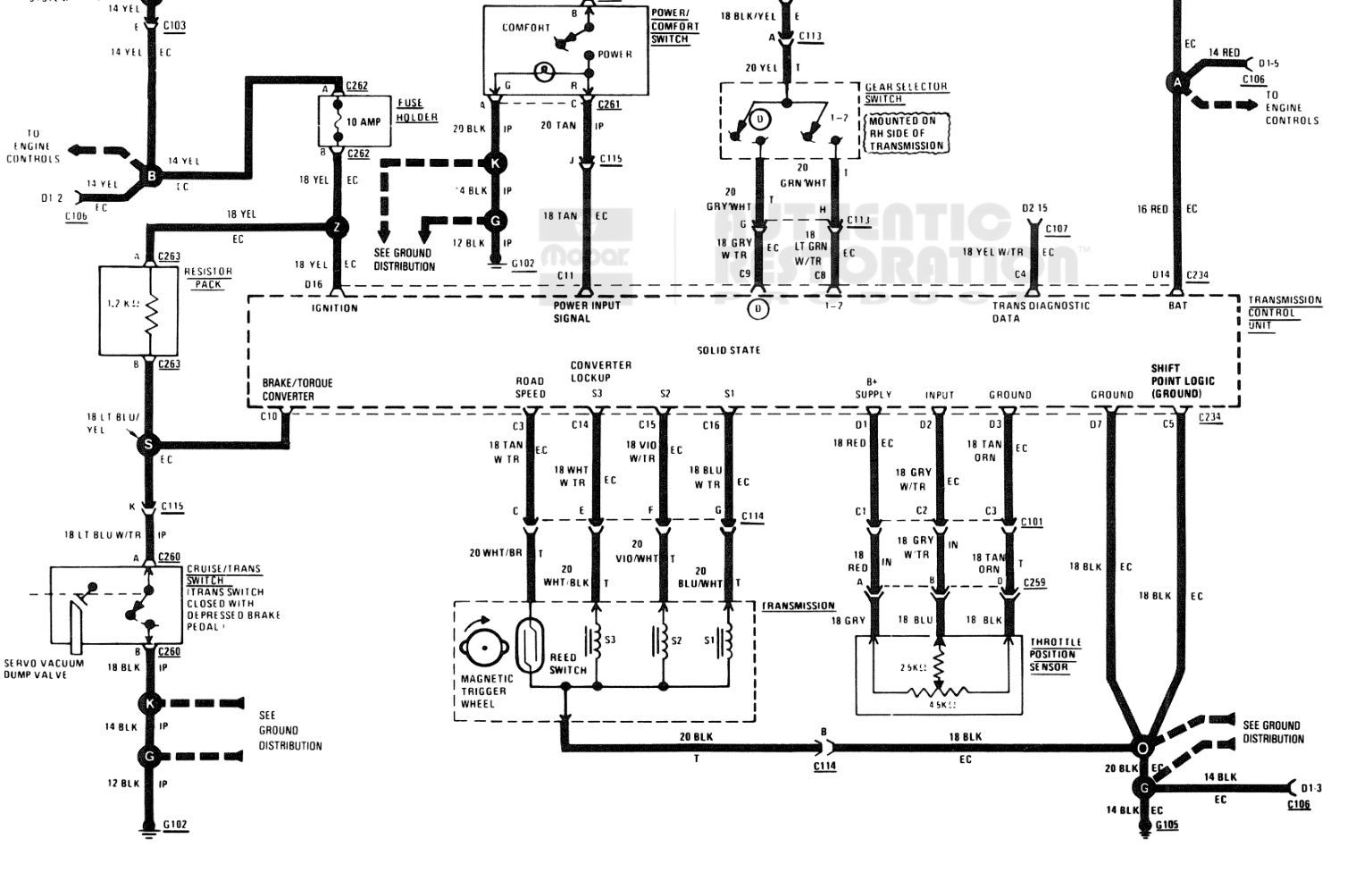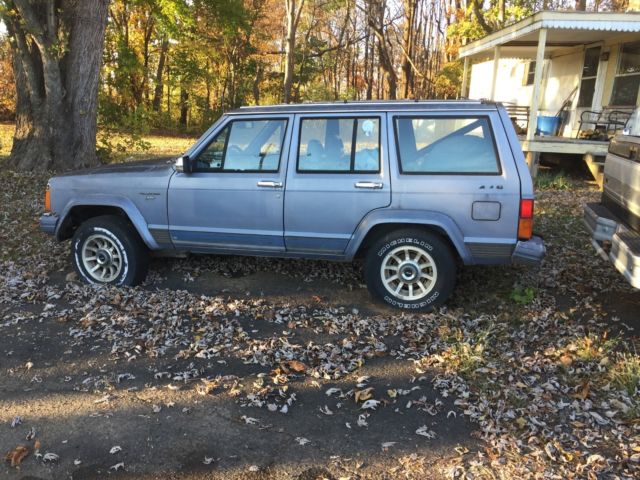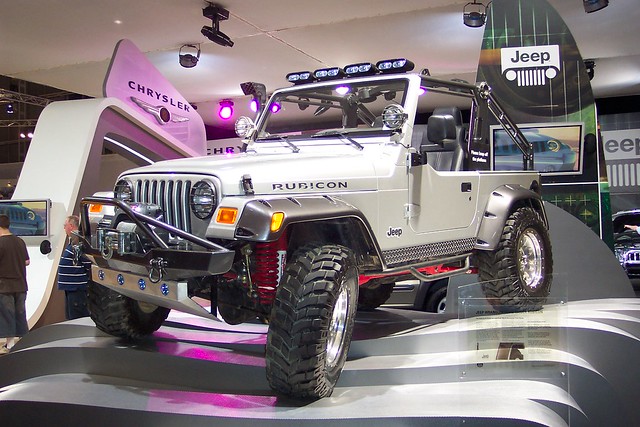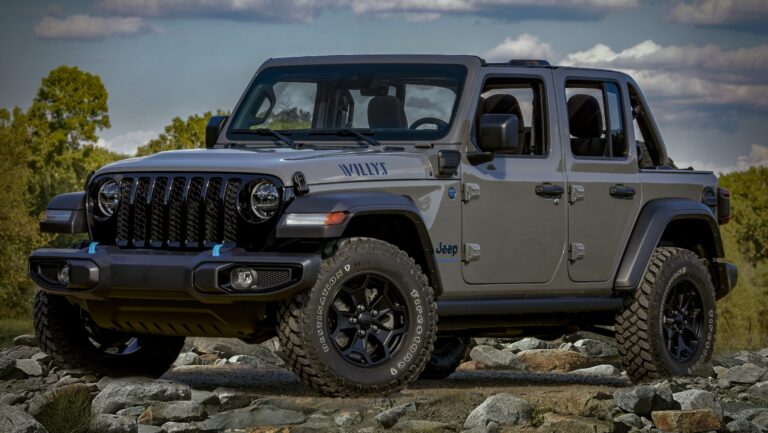The Enduring Legend: Exploring the 1989 Jeep Cherokee (XJ)
The Enduring Legend: Exploring the 1989 Jeep Cherokee (XJ) jeeps.truckstrend.com
In the annals of automotive history, few vehicles command the enduring respect and passionate following of the Jeep Cherokee XJ. And within that storied lineage, the 1989 model year stands as a quintessential representation of everything that made this compact SUV a groundbreaking icon. More than just a utilitarian vehicle, the ’89 Cherokee is a testament to rugged simplicity, unparalleled off-road capability, and surprising on-road versatility, cementing its place as a beloved classic for enthusiasts, adventurers, and everyday drivers alike. Its unibody construction, pioneering at the time for an SUV, combined with robust powertrains, created a vehicle that was lighter, more agile, and incredibly durable – a formula that continues to captivate and serve its owners decades later.
The XJ Legacy: Why the ’89 Stands Out
The Enduring Legend: Exploring the 1989 Jeep Cherokee (XJ)
The Jeep Cherokee XJ generation, produced from 1984 to 2001, revolutionized the SUV market. It blurred the lines between a traditional truck-based utility vehicle and a passenger car, offering a more car-like driving experience without sacrificing the legendary Jeep capability. The 1989 model year falls right in the sweet spot of this generation, benefiting from several years of refinement while retaining the no-nonsense design and mechanical simplicity that owners cherish.
The ’89 Cherokee was offered with a choice of two primary engines: the highly celebrated 4.0-liter AMC inline-six and the more fuel-efficient 2.5-liter AMC four-cylinder. Transmission options included a robust AW4 automatic and a durable AX-15 manual, paired with either the part-time Command-Trac (NP231) or the full-time capable Selec-Trac (NP242) transfer cases. This modularity allowed buyers to spec their Cherokee for a variety of uses, from daily commuting to serious off-road expeditions. Its relatively compact dimensions, excellent approach and departure angles, and solid axle suspension made it an immediate favorite for trail enthusiasts, while its practical interior and respectable fuel economy (for its class) appealed to families.
Under the Hood: Engine and Drivetrain Options
The heart of the ’89 Cherokee’s appeal lies in its straightforward and incredibly durable mechanicals.
- The 4.0L High Output Inline-Six: This engine is arguably the most significant factor in the XJ’s longevity. Known for its bulletproof reliability, impressive torque delivery (especially at low RPMs), and surprising power, the 4.0L is capable of racking up hundreds of thousands of miles with proper maintenance. It’s an engine that loves to rev and provides ample power for both highway cruising and tackling challenging terrain. Common "issues" are often minor, such as oil leaks from the valve cover or rear main seal, or occasional sensor failures, all of which are well-documented and easily remedied.
- The 2.5L AMC Four-Cylinder: While less common and certainly less powerful than its six-cylinder sibling, the 2.5L four-cylinder offers better fuel economy and is still a reliable powerplant. It’s better suited for lighter duty or those prioritizing efficiency over raw power.
- Transmissions:

- AW4 Automatic: Manufactured by Aisin-Warner, this 4-speed automatic transmission is renowned for its durability and smooth shifts. It’s a favorite among off-roaders due to its robustness and relative simplicity.
- AX-15 Manual: This 5-speed manual transmission is equally stout and offers a more engaging driving experience. It’s a popular choice for those who prefer full control and maximum durability.
- Transfer Cases:
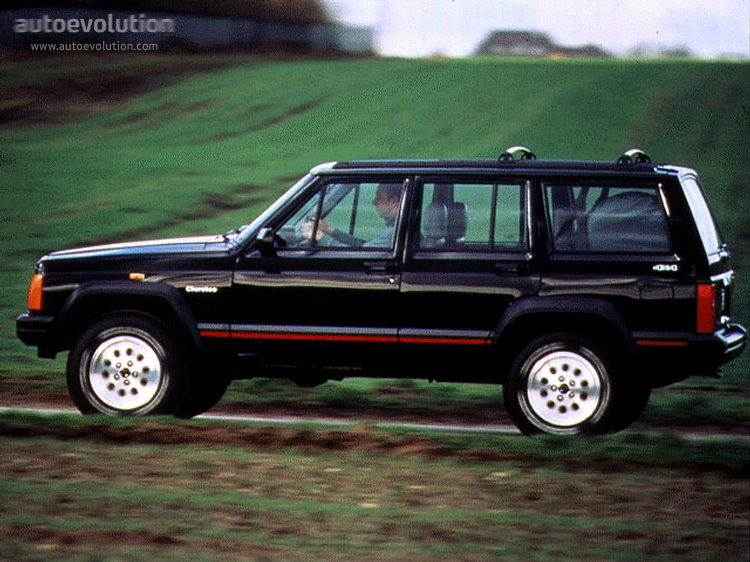
- NP231 Command-Trac: A part-time 4WD system, meaning it should only be engaged on loose or slippery surfaces. It’s incredibly robust and simple, making it a favorite for serious off-roaders.
- NP242 Selec-Trac: This system offers both part-time and full-time 4WD modes. The full-time option is excellent for mixed conditions like snow or wet pavement, providing enhanced traction without the binding issues of part-time systems.
- Axles: Most ’89 Cherokees came with a Dana 30 front axle and either a Dana 35c or, more robustly, a Chrysler 8.25 rear axle (though the 8.25 became more prevalent in later years). These are generally sturdy for stock applications, though heavy off-road use or larger tires may necessitate upgrades.

The ’89 Cherokee Experience: Driving & Owning
Owning an ’89 Jeep Cherokee is a unique blend of practicality, adventure, and a bit of hands-on maintenance.
- On-Road Manners: For a vehicle of its vintage and capability, the ’89 Cherokee offers surprisingly decent road manners. The unibody construction provides a more refined ride than many body-on-frame SUVs of its era. Steering is responsive, and visibility is generally good. While it won’t handle like a modern crossover, it’s perfectly comfortable for daily commuting and highway travel.
- Off-Road Prowess: This is where the ’89 Cherokee truly shines. Its compact size allows it to navigate tight trails, while its robust drivetrain, solid axles, and excellent ground clearance (even in stock form) make it incredibly capable off-pavement. With minimal modifications, an XJ can tackle trails that would stop many newer, more expensive SUVs in their tracks.
- Interior & Features: The interior of an ’89 Cherokee is best described as functional and utilitarian. Don’t expect luxurious appointments; instead, anticipate durable plastics, comfortable (if basic) seating, and a straightforward dashboard layout. Depending on the trim level (Pioneer, Laredo, Limited), features could include power windows, air conditioning, and a basic stereo system. The rear cargo area is surprisingly spacious, especially with the rear seats folded down.
- Common Wear Items & Maintenance: Like any vehicle approaching or exceeding three decades of age, the ’89 Cherokee has its common wear items. These include cooling system components (radiator, water pump, fan clutch), steering components (tie rod ends, ball joints), suspension bushings, and leaf springs (prone to sagging). Rust is also a primary concern, particularly in the rocker panels, floorboards, and rear quarter panels, especially in regions with road salt. Regular fluid changes (engine oil, transmission fluid, transfer case fluid, differential fluid) are paramount to the longevity of these vehicles.
Buying an ’89 Cherokee Today: What to Look For
Purchasing a vintage vehicle like the ’89 Cherokee requires a careful eye and a thorough inspection.
- Pre-Purchase Inspection Checklist:
- Rust: This is the #1 enemy. Check rocker panels, frame rails, floorboards (lift carpets!), wheel wells, and around the gas tank. Surface rust is manageable; widespread structural rust is a deal-breaker.
- Engine Health: Listen for strange noises (knocks, ticks), check for excessive smoke from the exhaust (blue for oil, white for coolant, black for fuel), and look for major oil or coolant leaks. Check the condition of belts and hoses.
- Transmission & Transfer Case: Ensure smooth shifts in both 2WD and 4WD. Test all 4WD modes (2H, 4H, 4L, and 4FT if Selec-Trac). Listen for grinding or clunking.
- Steering & Suspension: Check for excessive play in the steering wheel, worn ball joints, tie rod ends, and control arm bushings. Inspect leaf springs for sag and coil springs for cracks.
- Electrical System: Test all lights, wipers, power windows, A/C, and radio. Electrical gremlins can be frustrating.
- Brakes: Check pad and rotor wear, and test for proper function.
- Mileage vs. Condition: High mileage is common on these vehicles, and it’s less of a concern than the vehicle’s overall condition and maintenance history. A well-maintained 250,000-mile XJ is often a better buy than a neglected 100,000-mile one.
- Modifications: Many XJs have been modified. Inspect any lift kits, larger tires, or aftermarket bumpers for proper installation and quality. Poorly installed modifications can lead to more problems than benefits.
- Documentation: Service records are invaluable. They provide a history of maintenance and repairs, indicating how well the previous owner cared for the vehicle.
Keeping Your ’89 Alive: Maintenance & Upgrades
The ’89 Cherokee is a fantastic platform for both daily driving and extensive modification.
- Essential Maintenance: Beyond regular oil changes, prioritize the cooling system (flush, new thermostat, possibly an upgraded radiator), ignition system (spark plugs, wires, distributor cap/rotor), and fuel system (filter, injectors). Addressing rust early is crucial for long-term preservation.
- Common Repairs: Be prepared to replace parts like the water pump, serpentine belt, various sensors (Crank Position Sensor, Throttle Position Sensor are common culprits for stalling issues), and steering box. Leaf spring sag is almost inevitable, requiring replacement or add-a-leaf kits.
- Popular Upgrades:
- Lift Kits: 2-4 inch lifts are common, allowing for larger tires (30-33 inches) and improving off-road clearance.
- Tires: All-terrain or mud-terrain tires significantly enhance off-road capability.
- Armor: Aftermarket bumpers, rock sliders, and skid plates protect vital components.
- Lighting: LED light bars and auxiliary lights improve nighttime visibility on trails.
- Interior Comforts: Upgraded seats (from newer Jeeps or other vehicles), modern stereo systems, and sound deadening can make daily driving more pleasant.
- Community Support: One of the greatest assets of owning an ’89 Cherokee is the massive and supportive community. Online forums, social media groups, and dedicated parts suppliers make finding information, troubleshooting help, and aftermarket components incredibly easy.
Challenges & Solutions
While robust, owning an ’89 Cherokee comes with its own set of unique challenges.
- Rust: As mentioned, this is persistent. Solution: Thorough cleaning, rust converters, undercoating, and timely repair of small rust spots can slow its progress. Replacement body panels are available for common rust areas.
- Cooling Issues: The 4.0L runs hot. Solution: Regular cooling system flushes, ensuring the fan clutch is working, and considering an upgraded all-aluminum radiator can help prevent overheating.
- Leaf Spring Sag: Leads to a "squatted" look and reduced ride height. Solution: New leaf springs (often heavy-duty ones that provide a slight lift), add-a-leaf kits, or shackle relocators are common fixes.
- Electrical Gremlins: Older wiring and grounds can cause intermittent issues. Solution: Systematically diagnose using wiring diagrams, clean ground points, and check connectors for corrosion. Many common issues have well-known fixes online.
- Fuel Economy: It’s an older SUV with a fairly large engine. Don’t expect modern car mileage. Solution: Maintain it well (tune-ups, proper tire pressure), drive conservatively, and manage expectations.
1989 Jeep Cherokee Estimated Price Guide
Please note: Prices for vintage vehicles like the ’89 Jeep Cherokee vary wildly based on condition, mileage, location, modifications, and market demand. This table provides a general estimate.
| Condition Category | Estimated Price Range (USD) | Key Factors Influencing Price |
|---|---|---|
| Poor/Parts Car | $500 – $2,000 | Significant rust, major mechanical issues, non-running, salvage title. |
| Fair/Project | $2,000 – $4,500 | Runs but needs significant work (engine, transmission, body, interior), moderate rust, high mileage. |
| Good/Driver | $4,500 – $8,000 | Running and driving well, minor cosmetic flaws, some rust but not structural, well-maintained mechanically, potentially some tasteful modifications. |
| Excellent/Restored | $8,000 – $15,000+ | Very clean body with minimal to no rust, original or professionally rebuilt mechanicals, meticulously maintained, low mileage, highly desirable trim/options, tasteful and professional modifications. |
Important Considerations for Pricing:
- Engine: 4.0L models command significantly higher prices than 2.5L models.
- Transmission: Manual transmissions (AX-15) can sometimes fetch a premium among enthusiasts.
- Transfer Case: Selec-Trac (NP242) can be more desirable for daily drivers due to full-time 4WD.
- Trim Level: Laredo and Limited trims typically command more than Pioneer or base models.
- Location: Prices can vary regionally based on rust prevalence and demand.
- Modifications: Well-done, quality modifications can increase value, while poorly executed ones can decrease it.
Frequently Asked Questions (FAQ) about the 1989 Jeep Cherokee
Q: Is the 4.0L engine in the ’89 Cherokee truly reliable?
A: Yes, the 4.0L AMC inline-six is legendary for its reliability and longevity. With proper maintenance, it can easily exceed 200,000-300,000 miles.
Q: What’s the main difference between Command-Trac (NP231) and Selec-Trac (NP242) transfer cases?
A: Command-Trac (NP231) is a part-time 4WD system, meaning it should only be used on loose surfaces like dirt, snow, or mud. Selec-Trac (NP242) offers both part-time and a full-time 4WD mode, which can be used on paved roads for added traction in slippery conditions.
Q: Where are the common rust spots on an ’89 Cherokee?
A: The most common rust spots are the rocker panels, floorboards (especially under the carpet), rear quarter panels, and sometimes around the frame rails and gas tank skid plate.
Q: Is the ’89 Cherokee good on gas?
A: No, not by modern standards. The 4.0L engine typically gets around 15-18 MPG combined, depending on driving style, maintenance, and modifications. The 2.5L will be slightly better.
Q: Are parts still available for the 1989 Jeep Cherokee?
A: Absolutely! Due to the XJ’s popularity and long production run, a vast aftermarket and strong online community ensure that most replacement parts, both OEM and aftermarket, are readily available.
Q: Can I daily drive an ’89 Cherokee?
A: Many people do! While it won’t have the refinement of a modern vehicle, a well-maintained ’89 Cherokee is perfectly capable and comfortable enough for daily commuting. Be prepared for regular maintenance and the occasional quirk of an older vehicle.
Conclusion
The 1989 Jeep Cherokee is more than just a vehicle; it’s a testament to a bygone era of automotive design where simplicity, ruggedness, and genuine capability reigned supreme. Its unyielding spirit, combined with a vast support network and readily available parts, ensures that the ’89 XJ continues to be a relevant and highly sought-after vehicle today. Whether you’re a seasoned off-roader, a classic car enthusiast, or simply someone seeking a reliable and characterful daily driver, the ’89 Cherokee offers an unparalleled blend of utility, adventure, and timeless appeal. It’s not just transportation; it’s an experience, a hobby, and a piece of automotive history that continues to inspire and perform.
